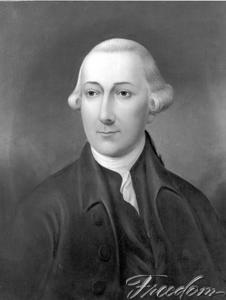SAVVY WOMEN
AMY BURFOOT, SR. ca 1734-1798
AMY BURFOOT, JR. ca 1760-1810
Mother and Daughter
"When Amy Burfoot became a widow in 1780, she faced two conventional modes of procedure. She could remain more or less in retirement, performing such tasks as carding, spinning and weaving while managing her estate. Or after what was considered a decent interval, she could take another husband, leaving the management of the estate to him, while she still continued to card, spin, and such like. … Amy Burfoot … decided not to proceed according to the conventional pattern; she decided to employ her own talents in a business world which the menfolk considered reserved for their activities alone.
" … Quite probably she encountered some masculine resentment at what was considered an improper feminine intrusion in an arena reserved heretofore for the male population. She also labored under another handicap in not being able to write her name … . Nothing daunted and with confidence, she embarked upon her career with vigor. Sometimes a deed reads as if she had dictated it, as, for an illustration, 'this being the very spot I bought of Josiah Gallop.' Her transactions were never large, … but they were regular and continuous until her death. …"
 |
Map of Camden County
Wikipedia
|
Amy Sr.'s daughter, Amy Jr. was as practical as her mother. "She was a minor when her father died in 1780. About the same time the elderly John Griffin, well-to-do planter and millwright, became a widower. Before long he looked about him, as widowers often do, and proposed to the young Amy.
"Now John Griffin was a highly respectable citizen and his possessions were sufficient to insure a wife a comfortable existence. Amy herself was not entirely destitute, having (received a small inheritance from her father.) Since a husband in those days practically acquired control of his wife's property, however, she may have been disturbed as to what provision an elderly widower with children might make for his second wife. … She may have felt that with her youth and the groom's advanced years, merely a marriage would hardly be a fair transaction for her. … Before she married (John), he deeded the prospective bride one hundred and fifty acres of land, ten slaves and a windmill, in fact all his possessions except the property he had acquired from his first wife.
"… John Griffin and Amy were married. She bore him a son and a daughter. He seems to have been quite happy with the marriage inasmuch as at his death after nine years he left to his wife additional properties to those he had given her before the ceremony.
"As a widow Amy Griffin faced a situation similar to that which her mother had known. She was still less than thirty years old and, unlike her mother, she decided to marry again. The situation was now somewhat in reverse to that of her first marriage. She had two young children, and there was the possibility that after marriage the control her husband would acquire over her property would deprive those children of what she considered rightfully theirs. Her fiance was an excellent young man, but before she married him she deeded to young Samuel and Fanny Griffin the real estate which had been given her by their father. …
"Amy Griffin went on to marry Jonathan Lindsey of Currituck, and from all appearances they lived happily ever after. They negotiated several business transactions and they prospered, the husband no doubt receiving practical assistance from his astute helpmeet."
[Taken from Three Hundred Years Along the Pasquotank, A Biographical History of Camden County by Jesse Forbes Pugh, 1957]

